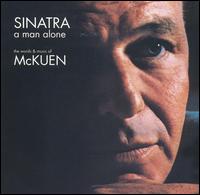Complete personnel
Tracks 1, 6, 8, 12:
(March 20, 1969 – Reprise recording session – Western Recorders 8–11 PM)
John Cave, James Decker, James McGee, Arthur Maebe (fr-h); Gene Cipriano, Norman Herzberg, Bill Hood, Ronny Lang, Don Lodice, Ted Nash, Bud Shank, Nino Tempo (sax/wwd); Thelma Beach, Arnold Belnick, James Getzoff, William Kurasch, Emo Neufeld, Lou Raderman, Sally Raderman, Mischa Russell, Ralph Schaeffer, Marshall Sosson, Gerald Vinci, Tibor Zelig (vln); Alvin Dinkin, Alex Neiman, Allan Harshman, Paul Robyn (via); Justin DiTullio, Armand Kaproff, Ray Kramer, Jacqueline Lustgarten (vlc); Kathryn Julye (harp); Bill Miller (p); Al Viola (g); Chuck Berghofer, Eddie Gilbert (b); Alvin Stoller (d); Larry Bunker (perc).
Tracks 2, 4, 10, 11:
(March 21, 1969 – Reprise recording session – Western Recorders 8–11 PM)
John Cave, Vincent DeRosa, William Hinshaw, Richard Perissi (fr-h); Gene Cipriano, Norman Herzberg, Bill Hood, Ronny Lang, Don Lodice, Ted Nash, Bud Shank, Nino Tempo (sax/wwd); Thelma Beach, Arnold Belnick, James Getzoff, William Kurasch, Emo Neufeld, Lou Raderman, Sally Raderman, Mischa Russell, Ralph Schaeffer, Marshall Sosson, Gerald Vinci, Tibor Zelig (vln); Alvin Dinkin, Alex Neiman, Allan Harshman, Paul Robyn (via); Justin DiTullio, Armand Kaproff, Edgar Lustgarten, Nino Rosso (vlc); Kathryn Julye (harp); Bill Miller (p); Al Viola (g); Chuck Berghofer, Eddie Gilbert (b); Alvin Stoller (d); Emil Richards (perc).
Tracks 3, 5, 7, 9:
(March 19, 1969 – Reprise recording session – Western Recorders 8–11 PM)
John Cave, Vincent DeRosa, William Hinshaw, Richard Perissi (fr-h); Gene Cipriano, Chuck Gentry, Norman Herzberg, Ronny Lang, Don Lodice, Ted Nash, Bud Shank, Nino Tempo (sax/wwd); Israel Baker, Thelma Beach, Bonnie Douglas, Jacques Gasselin, Emo Neufeld, Lou Raderman, Sally Raderman, Nathan Ross, Mischa Russell, Paul Shure, Marshall Sasson, Gerald Vinci (vln); Alvin Dinkin, Alex Neiman, Allan Harshman, Paul Robyn (via); Justin DiTullio, Edgar Lustgarten, Kurt Reher, Nino Rosso (vlc); Kathryn Julye (harp); Bill Miller (p); Al Viola (g); Chuck Berghofer, Eddie Gilbert (b); Irving Cottler (d); Larry Bunker (perc); Nancy Adams, Tom Bahler, Betty Baker, James Bryant, Jan Gassman, Bill Lee, Diana Lee, Susan Tallman, Marie Vernon, Jerry Whitman (voc)
